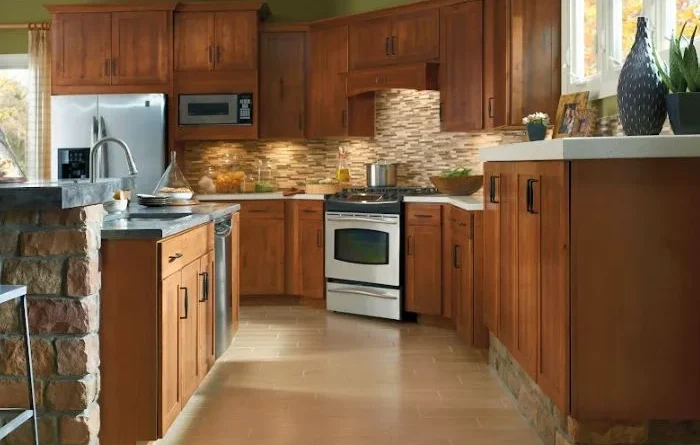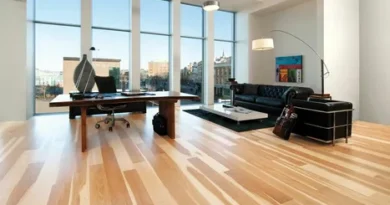The Future of Kitchen Cabinets: Trends and Innovations in 2024
In the realm of interior design, kitchen cabinets play a pivotal role in both functionality and aesthetics. Over the years, these essential components have undergone significant transformations, reflecting shifts in design preferences, technological advancements, and environmental consciousness. As we step into 2024, the landscape of kitchen cabinets continues to evolve, driven by innovative trends and groundbreaking innovations.
The Evolution of Kitchen Cabinets
Early Kitchen Cabinets
Kitchen cabinets trace their roots back to the early 20th century when they primarily served utilitarian purposes, providing storage and organization in kitchen spaces.
Modern Advancements
In recent decades, kitchen cabinets have witnessed a revolution in design and functionality. From sleek modular designs to ergonomic layouts, modern cabinets blend style with practicality, catering to the diverse needs of homeowners.
Current Trends in Kitchen Cabinets
Sustainable Materials
Today, sustainability reigns supreme in kitchen design. Homeowners are increasingly opting for eco-friendly materials such as bamboo, reclaimed wood, and recycled composite materials for their cabinets.
Minimalistic Designs
Minimalism continues to dominate the design scene, with clean lines, sleek finishes, and uncluttered spaces defining contemporary kitchen aesthetics.
Smart Technology Integration
The integration of smart technology is revolutionizing kitchen functionality. Cabinets equipped with sensor-activated lighting, touchless features, and built-in charging stations are becoming commonplace, enhancing convenience and efficiency.
Innovations Shaping the Future
Customization Options
The future of kitchen cabinets lies in customization. Manufacturers are offering bespoke solutions tailored to individual preferences, allowing homeowners to personalize every aspect of their cabinetry, from finishes to hardware.
Functional Design Elements
Innovative design elements such as pull-out shelves, hidden compartments, and adjustable storage modules maximize space utilization and improve accessibility in the kitchen.
Enhanced Storage Solutions
With urban living spaces shrinking, there is a growing demand for innovative storage solutions. From vertical pull-outs to corner carousels, cabinets are being optimized to make the most of limited square footage.
Environmental Considerations
Eco-Friendly Materials
The quest for sustainability extends to the materials used in cabinet construction. Manufacturers are exploring eco-friendly alternatives such as recycled plastics, soy-based adhesives, and water-based finishes to reduce environmental impact.
Energy-Efficient Features
Incorporating energy-efficient lighting and appliances into cabinet designs helps minimize energy consumption and lower utility bills, aligning with eco-conscious lifestyles.
Technological Integration
IoT Devices
The Internet of Things (IoT) is revolutionizing kitchen functionality, with cabinets equipped with voice-activated controls, touchscreens, and integrated apps, turning the kitchen into a hub of connectivity and convenience.
Smart Storage Solutions
From automated pantry organization systems to refrigerated drawers, smart storage solutions optimize space and streamline kitchen workflows, making meal preparation a breeze.
Aesthetic Trends
Color Palettes
Neutral tones such as white, gray, and beige remain popular choices, lending a timeless appeal to kitchen cabinetry. However, bold accents and statement colors are also making a comeback, adding personality and character to kitchen spaces.
Texture and Finishes
Textured finishes such as matte, satin, and distressed surfaces add depth and visual interest to cabinet designs, creating tactile experiences that resonate with homeowners.
Accessibility and Universal Design
Aging in Place Considerations
As the population ages, there is a growing emphasis on designing kitchens that accommodate the needs of seniors and individuals with mobility challenges. Features such as adjustable-height countertops, pull-out shelves, and D-shaped handles promote independence and safety.
Universal Design Principles
Universal design principles focus on creating inclusive spaces that can be used by people of all ages and abilities. Cabinets designed with universal accessibility features ensure that everyone can navigate and use the kitchen with ease.
Affordability and Accessibility
Budget-Friendly Options
While high-end custom cabinets offer unparalleled quality and craftsmanship, budget-friendly options abound for homeowners seeking cost-effective solutions without compromising on style or functionality.
Accessibility for All Income Levels
Inclusivity is key in the world of kitchen design, with manufacturers offering a diverse range of products catering to different income brackets and lifestyle preferences.
Challenges and Solutions
Cost Considerations
Investing in quality kitchen cabinets can be a significant expense for homeowners. However, savvy shoppers can explore various financing options, discounts, and incentives to make their dream kitchen a reality without breaking the bank.
Integration with Existing Kitchen Layouts
When renovating or remodeling a kitchen, integrating new cabinets seamlessly with existing layouts and fixtures can pose a challenge. Working with experienced designers and contractors can help ensure a cohesive and harmonious design scheme.
Maintenance and Durability
Choosing durable materials and finishes is essential for ensuring the longevity of kitchen cabinets. Regular maintenance and proper care practices such as cleaning spills promptly and avoiding harsh chemicals can help preserve the beauty and functionality of cabinets for years to come.
Consumer Preferences and Behavior
Research and Decision-Making Process
Before making a purchase, consumers conduct extensive research, seeking inspiration from design magazines, online forums, and social media platforms to inform their decision-making process.
Influences on Purchasing Decisions
Factors such as durability, aesthetics, functionality, and brand reputation influence consumers’ purchasing decisions when selecting kitchen cabinets. Reviews and recommendations from friends and family also play a significant role in shaping preferences.
Industry Outlook
Growth Projections
The kitchen cabinet industry is poised for steady growth in the coming years, driven by factors such as population growth, urbanization, and rising disposable incomes.
Emerging Market Trends
From modular designs to sustainable materials, emerging market trends reflect changing consumer preferences and evolving lifestyles, paving the way for innovation and creativity in kitchen cabinet design.
The Role of Sustainability
Recycling and Upcycling Initiatives
Manufacturers are increasingly embracing recycling and upcycling initiatives, repurposing materials and minimizing waste in the production process to reduce environmental footprint.
Renewable Materials
The use of renewable materials such as bamboo, cork, and engineered wood is gaining traction, offering eco-friendly alternatives to traditional hardwoods and composite materials.
Innovative Materials and Techniques
Nanotechnology Applications
Nanotechnology is revolutionizing cabinet construction, enhancing durability, resistance to scratches and stains, and overall performance.
Recycled Materials
The incorporation of recycled materials into cabinet production not only reduces environmental impact but also adds unique character and charm to kitchen spaces.
Conclusion
As we embark on the journey into 2024, the future of kitchen cabinets is brimming with possibilities. From sustainable materials to smart technology integration, the evolving landscape of kitchen design reflects our collective aspirations for functionality, aesthetics, and environmental stewardship.
FAQs (Frequently Asked Questions)
Are custom kitchen cabinets worth the investment?
Custom kitchen cabinets offer tailored solutions that maximize space and reflect individual preferences, making them a worthwhile investment for homeowners seeking personalized design options.
What are the latest trends in kitchen cabinet hardware?
Sleek, minimalist hardware in matte black, brushed nickel, and brass finishes is trending in kitchen cabinet design, adding a touch of sophistication to modern spaces.
How can I make my kitchen cabinets more eco-friendly?
Opt for cabinets made from sustainable materials such as bamboo, recycled wood, or low-emission MDF, and choose water-based finishes to minimize environmental impact.
What are the advantages of smart kitchen cabinets?
Smart kitchen cabinets offer convenience, efficiency, and enhanced organization, with features such as sensor-activated lighting, touchless controls, and integrated charging stations.
How often should I refinish or repaint my kitchen cabinets?
The frequency of refinishing or repainting kitchen cabinets depends on factors such as wear and tear, exposure to moisture, and changes in design preferences. Generally, cabinets may need to be refinished every 5-10 years to maintain their appearance and protect against damage.



